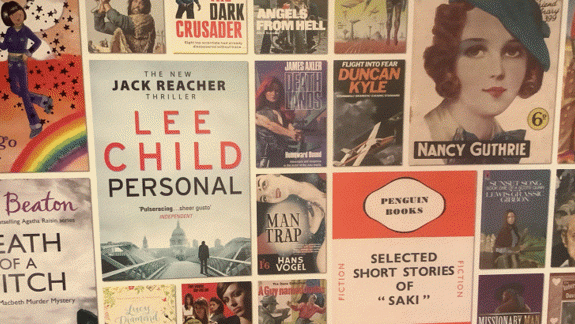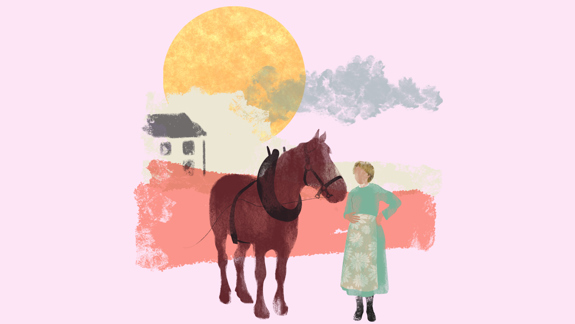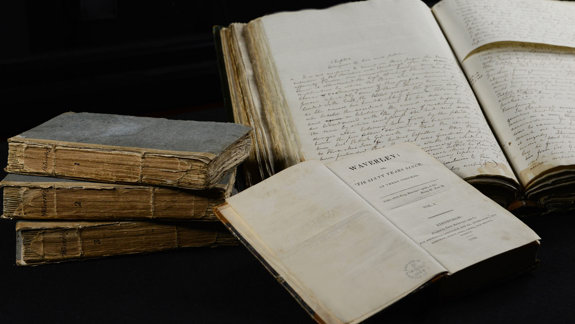Pen names: Literary anonymity and identity

Introduction
What is a pen name?
A pen name is a device used by some writers to allow them to express themselves while hiding their true identities. Also known as a literary alias, pseudonym or nom de plume, it can be a variation of a writer's birth or married name or a completely invented pseudonym. Authors have chosen to use a pen name for all sorts of reasons, such as privacy, gender, reputation, authenticity, and genre.
Throughout history, pen names have played a significant role in shaping literature. Ideas of authorship have evolved over time and publishing anonymously and pseudonymously became an established literary convention in British literature.

Fame versus anonymity
In the Classical world, literary fame was regarded as a desirable thing by most authors. The names and works of Virgil and Aristophanes, for example, have far outlasted the civilisations in which they lived. But views on worldly fame changed when Christianity spread through Europe. Writers were now more likely to think of themselves as just part of a collective literary endeavour, and the authorship of many works such as 'Beowulf' is unknown. At this time, the oral tradition was still mostly dominant too.
"In the 19th century literature starts to resemble a masked ball, with many authors choosing to hide their identities."
The early modern period (roughly 1500 to 1800) was a period of greater individualism. This is also when the idea of literary copyright was born. Writers could now earn a living from their work. William Shakespeare's name became what we would now call a brand and it appeared on his plays to help sales. Many works were still published anonymously, though, or attributed to 'a lady', or 'a clergyman'.

The rise of pen names
In the 19th century literature starts to resemble a masked ball, with many authors choosing to hide their identities. By 1830, around 80% of novels were issued under a pen name or were anonymous. Printers were obliged by law to put their name on the title page of a book, and it was suggested that the law should be extended to make authors publish under their 'real' names, but this never happened.
Pen names became part of the literary landscape, especially as women had become a force in literature. They were more likely to publish anonymously or under a pen name because of their position in society and fears their work would be judged more harshly. The Brontë sisters, for example, published under the names of Currer, Ellis and Acton Bell. Charlotte Brontë later explained the decision was because of "a vague impression that authoresses are liable to be looked on with prejudice".

Some of the most famous male authors of the period also used pen names. Charles Dickens started his publishing career via short pieces in newspapers from 1833. At first, they were anonymous, but soon they were published under the pen name Boz. His first book was a collection of these pieces called 'Sketches by Boz'. This pen name was derived from the way Dickens pronounced Moses, his nickname for his brother, as a small child. William Thackeray signed magazine contributions as Charles James Yellowplush, George Savage Fitz-Boodle and Michael Angelo Titmarsh, among others. His use of pen names is thought to be because his early work was often satirical and rather scathing.
By the end of the 19th century literature by women was popular and lucrative which might explain why Scottish writer William Sharp chose to publish several novels as Fiona Macleod in the 1890s. Sharp's motivations for this were complex and remain obscure. He maintained that Macleod was a cousin, and it seems possible that Sharp believed she existed. The fictional Macleod even had an entry in 'Who's Who' an annually published list of people from around the world who influenced British life.
In the 20th and 21st centuries the authors behind most pen names are known. If you look at the author information on the historical crime novels attributed to Ambrose Parry, the photograph and the details are of the authors Chris Brookmyre and Marisa Haetzman.
Hiding gender behind pen names
Pen names are now as much a marketing tool as they are a mask for authors. Research by Nielsen in 2021 revealed that for the top ten bestselling women authors in the UK only 19% of their readers are men while 81% are women.
Men seem reluctant to pick up novels written by women. The female author with the largest male readership was crime writer L. J. Ross. She hides her full name Louise (and thus her gender) behind initials. In 2012, the historical novelist Shona MacLean was advised to publish future books as S. G. MacLean. Her publisher thought her name was too soft and feminine and might put off men. For similar reasons, Bloomsbury suggested the Harry Potter novels should be published by J. K. Rowling, not Joanne Rowling.
When Iain Blair had little success writing thrillers he switched to writing romance. It was suggested that his romantic novels might sell better if they were published under a woman's name and so they appeared under the pen name Emma Blair. His wife Jane commented, "Emma was not the quiet, retiring type but a 6ft 3in Glaswegian called Iain Blair who enjoyed a pint and a smoke". Emma was revealed to be Iain in 1998 when his 'Flower of Scotland' was nominated for the Romantic Novel of the Year Award.

Pen names today
In the 21st century, it is not so easy for writers to hide behind a pen name. Especially if it does not align with their gender or appearance. Today writers have to go out into the world and appear on the media, social media and at book festivals. But it does still happen! Two of the bestselling authors of this century are E.L. James and Lee Child, both of which are pen names.
E. L. James, author of the 'Fifty Shades of Grey' series, is the pen name of Erika Leonard. She started by writing online fan fiction based on 'Twilight' under the pseudonym of Snowqueens Icedragon. She adapted this, removing any references to 'Twilight', and published it as 'Fifty Shades of Grey' using the pen name E. L. James. She chose to do this because of the sexual nature of her work, and the fact that she had young children at the time.
Lee Child is the pen name of James Grant, the writer behind the 'Jack Reacher' novels. The name Lee Child came from a family in joke inspired by Renault's 'Le Car' advertising campaign. Grant and his wife began to prefix things with "le", jokingly referring to their daughter as "le child". Slightly adapted, this became Grant's pen name. This fun pen name also has a serious marketing advantage. On shelves in book shops and libraries, using the name Lee Child means his books appear sooner than if he had used his own last name, Grant. Plus, they sit between the famous writers Raymond Chandler and Agatha Christie.

In literature, pen names have been a disguise, allowing authors to navigate privacy and marketing with flair. While it's more difficult to fully hide behind pen names today, there are still plenty of reasons writers adopt them. What would your pen name be?
About the author
A member of our Published Collections team, Ian Scott is a Curator with a specialism in sport, leisure and newspapers.
Dive deeper
Lewis Grassic Gibbon and 'Sunset Song'

Literature and poetry


